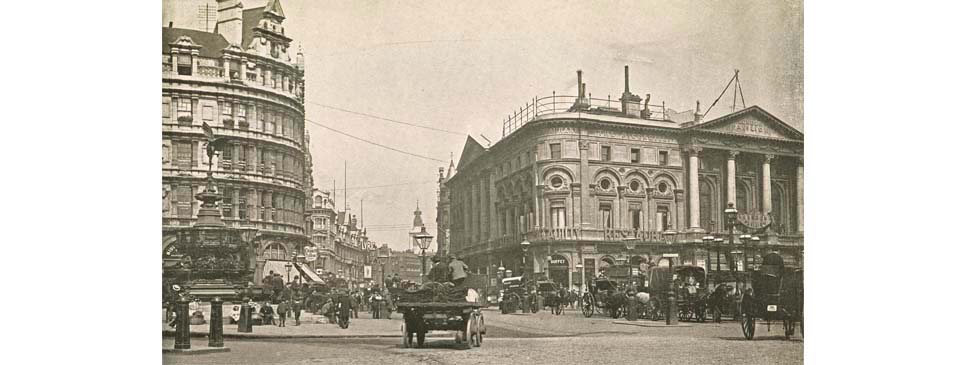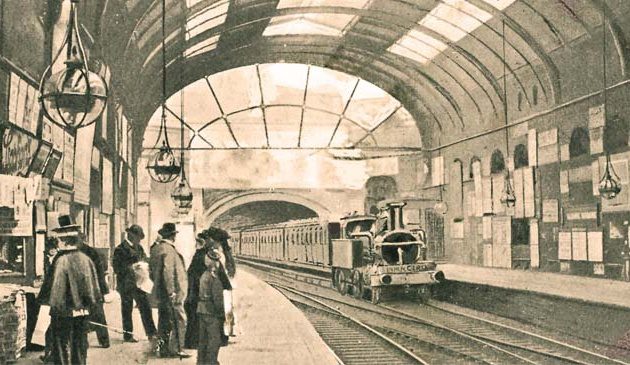In brief – Late-Victorian London

Piccadilly Circus at the end of the 19th century. We see along Shaftesbury Avenue, which was laid out in 1886 from here to Cambridge Circus and on to New Oxford Street. At the same time, the former London Pavilion music hall, seen on the right, was rebuilt and enlarged as a grand variety theatre. On the left is the Shaftesbury Memorial Fountain, erected in 1892-3 and topped by Anteros, but normally mistakenly known as ‘Eros’. Both the fountain and street are named after the philanthropist, the 7th Earl of Shaftesbury.
The worst disaster in British history took place in 1878 when the passenger steamer Princess Alice collided with a larger boat on the Thames and at least five hundred people were drowned. Thirty-five were drowned at the launching of a battleship at Blackwall in 1898 and twenty-six children died in a fire at the Forest Gate Industrial School in 1890. These were just the most notable of a number of disasters during the period.
An international conference attended by twenty-five countries held in Washington DC in 1884 determined that the zero line of longitude should be standardized and pass through the Royal Observatory at Greenwich. The same conference agreed that Greenwich Mean Time should be used to calculate time zones around the world.
The railway companies created grand new hotels at their London termini, such as the Midland Grand at St. Pancras. With so many visitors arriving in the capital other large, modern hotels were opened or enlarged around central London, including the Langham, the Cecil (the largest in Europe at that time), the Savoy, Claridges, and the Russell.
For the average Londoner the best place to socialize and spend their free time was the pub. Many grew in size, becoming more palatial. Some pubs added an area for music and dancing, or a hall that could be used for meetings. In 1864 the Aerated Bread Company opened the first of their chain of tea-rooms, which were popular with women who could visit unaccompanied by their husbands. The ABC tea-rooms were followed later in the century by the J. Lyons outlets, the first of which opened at Piccadilly in 1894.
It was from pubs that the music hall, the most popular entertainment for the working classes, evolved in the second half of the century. They originated in the suburbs but soon arrived in the West End with the opening of the Alhambra in Leicester Square in 1860. In 1884 it was joined by the equally luxurious Empire Theatre. At the end of the 1870s there were seventy-eight large music halls in London and perhaps three hundred smaller premises. However, strict new safety standards were introduced to prevent fires and by the 1890s the number had reduced to around forty large venues.
Numerous new theatres opened around the Strand, Shaftesbury Avenue and other areas of central London to add to those that already existed, where drama, musicals and operas – including those by Gilbert & Sullivan – were presented to Londoners and visitors. The Royal Albert Hall opened in Kensington in 1871 for larger musical works, followed by the Queen’s Hall at Langham Place, home of Henry Woods’s ‘Proms’ until the mid-20th century.
There were a range of buskers and other entertainers making a living on London’s streets. From around the middle of the century groups of German musicians entertained those passing by who not only threw money into their hat but might also hire them for a party or other social function. By the end of the century around a thousand Italian barrel organ-grinders walked the streets, adding the melodies of their machines to the general cacophony.


